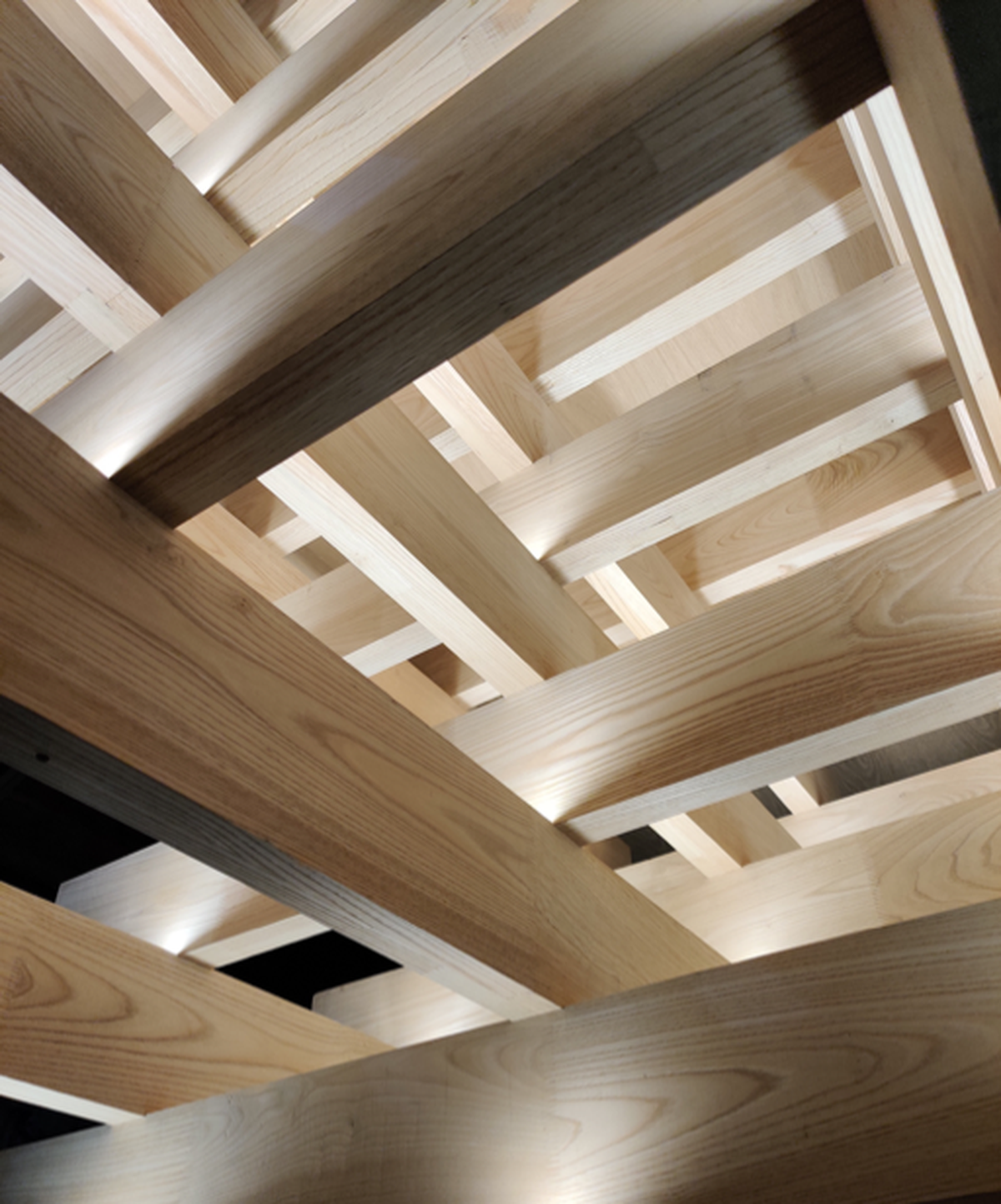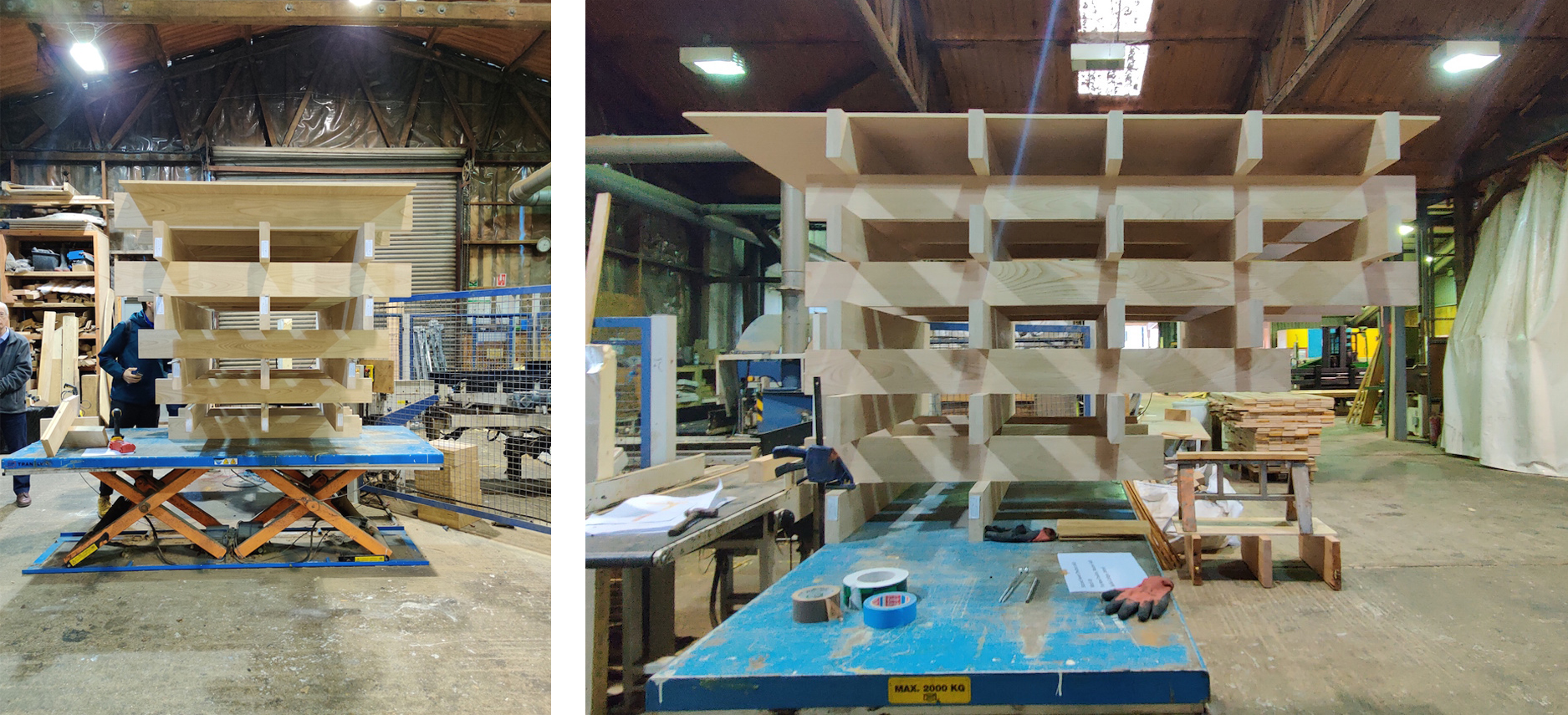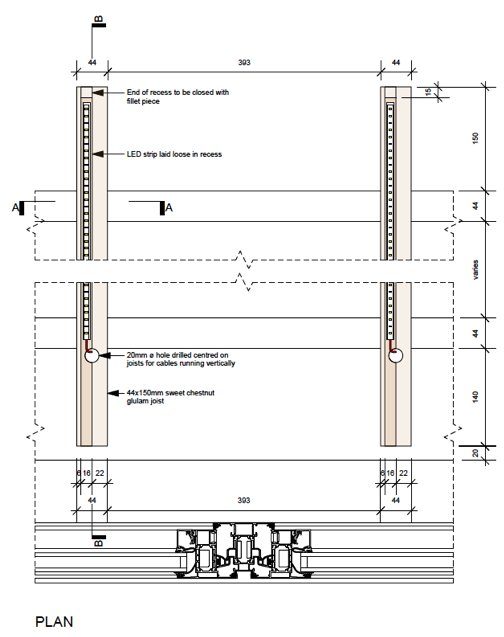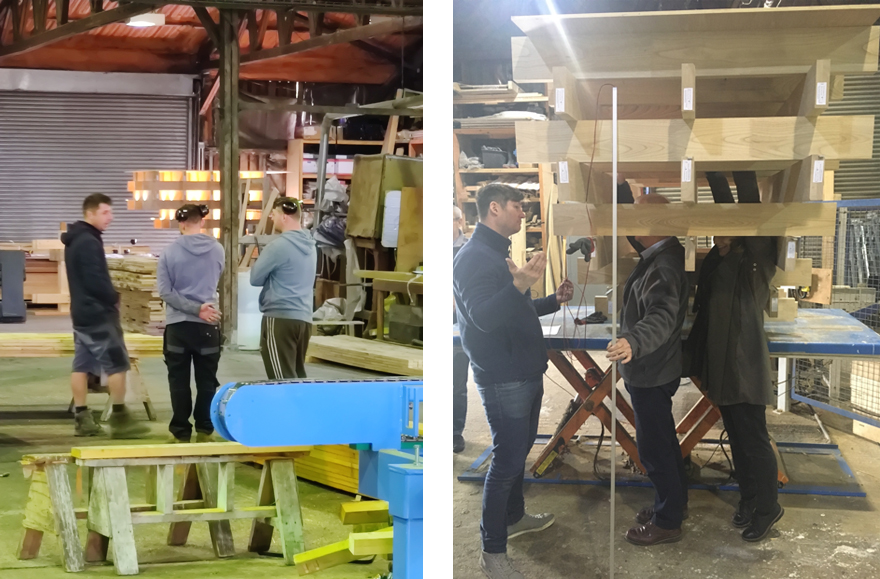BALLIOL COLLEGE, SPORTS PAVILION
NOVEMBER 2019

7:45 AM, London Bridge. The train from Uckfield just entered the station and is spitting out hundreds of commuters, flowing past us. We hop on the now empty train and leave London to visit our timber sub-contractor’s workshop in East Sussex.
We are fast approaching the construction stage of our Sports Pavilion project for Balliol College in Oxford and were invited to review a mock-up of the roof structure. The pavilion roof is formed of slender sweet chestnut glulam joists; 10 layers are stacked on top of each other, each layer cantilevering further into the space, creating a coffer.

1:50 model
From outside the roof structure expresses itself as a lantern, popping up in the centre of the building. The lantern is fully glazed, allowing for rays of sunshine to enter through the stacked glulam. In the evening, the dense timber lattice will be highlighted by a subtle glow, originating from LED strips, that are recessed in the top of the glulam joists.

The mock-up in Inwood’s (timber sub-contractor) workshop


Lighting strategy detail plan and section
The mock-up was used to test the connection details between the individual layers of glulam, the construction sequence, and the integration of the LED strips and the associated wiring. Preceding the assembly of this mock-up, these details have been worked through and coordinated in many lengthy design workshops, involving the contractor, structural and electrical engineers, the timber sub-contractor, electricians and us architects. As such, it was even more enjoyable to review the mock-up with all the parties involved and to see our combined efforts bearing fruit.

The carpenters who built the mock-up and the Electrical Engineer, Design Manager, and Architect discussing the installation and accessibility of the LED strips
LARGE-SCALE MODEL MAKING
SEPTEMBER 2014
The use of physical models by architects is well established, and can be seen throughout history as the natural partner to drawings for exhibiting a proposal of the building prior to construction. Within our practice, models are rarely produced as mere presentation pieces, but rather as tools for exploration. This role makes them less precious and complete, with the ability to change and adapt the design following the feedback that the model has initiated.
The type of models that I enjoy most are those of a larger scale, of 1:20 and above where you are able to get your head inside and truly appreciate the space. In addition to the final form of such models, much is learnt through the process of construction. Structure, surfaces and junctions are some of the issues that require resolution during the making of the model. Within our studio space, we have a large area dedicated to model making, which allows for building and display of sizeable pieces.

During our work on a new build private residence in Hampshire, we carried out much of the design work on the external envelope through the use of physical models. They were worked up in increasing scales including a 1:10 piece of the facade. In particular, we were considering the form of the heavy external piers, fascias and cornices against the lighter timber elements that sat within them. We made the model using a similar sequence to the proposed building construction. We put the more solid facade elements in place so that we could begin considering a number of different forms for the timber window framing that sat within. The glazing was again produced in a similar method to the full-scale building, with a timber-framed bay built separately prior to installation in to the existing facade. We fixed these delicately so that removal would be possible.
We worked on a number of iterations of the window form, adapting the frames and constructing new versions when modification was not possible. Each time, the model was left on display within the studio so that everyone in the practice could consider the alternative versions and provide feedback. Once we had a favoured form, we used the same model to illustrate the proposal to the clients for approval.
I believe that such iterative assessments and amendments would only have been possible through the use of a large-scale physical model. Building models is about constructing space, and many of the activities are similar in technique and execution as the construction of a real building. By carrying out these actions in miniature we may appreciate the building as a physical form and understand the three dimensional mass. Building of models is our primary opportunity to test and refine our building form, whilst experiencing and discovering an approximation of the processes that will be required to make it.
Alastair Crockett studied at the University of Bath, University College London and London Metropolitan University. Since joining Niall McLaughlin Architects in 2012 he has worked on the T1 building in King’s Cross; a private residence in Hampshire and the Nazrin Shah Building for Worcester College in Oxford.






